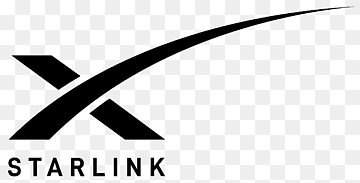Imagine launching thousands of satellites into low Earth orbit just to beam high-speed internet down to rural farms, frozen tundras, and mountaintop cabins. It sounds like a sci-fi side quest — but that’s exactly what SpaceX’s Starlink is doing. And in just two years, it’s made jaw-dropping progress: the system has essentially doubled its download speeds since 2022.
But here’s the kicker: even with all that momentum, Starlink still doesn’t meet the FCC’s definition of broadband. Not quite, anyway.
Let’s break it down.
So, What Counts as “Broadband” Now?
Once upon a time, the FCC said 25 Mbps down and 3 Mbps up was good enough to be called broadband. That was… generous, to put it nicely. But as our lives moved online, those numbers started to feel laughably small.
In 2023, the FCC raised the bar. The new standard? 100 Mbps download and 20 Mbps upload. Now that’s broadband — at least on paper.
Starlink, for all its orbital wizardry, clears the first bar. Its median download speed now floats comfortably over 100 Mbps. Some users even report speeds as high as 200 or 300 Mbps in ideal conditions. But upload speeds? That’s where things start to stall. The median hovers around 14.8 Mbps — close, but still shy of that 20 Mbps requirement. And for users doing cloud backups, Zoom calls, Twitch streams, or remote work, that shortfall makes a difference.
The Good News: Progress Is Real
It’s easy to be critical when a company falls short of a benchmark, but let’s take a moment to appreciate the gains. In early 2022, Starlink’s median download speed was under 50 Mbps. Uploads weren’t much better. Since then, they’ve launched more satellites, optimized ground stations, and tuned their network. That’s resulted in a doubling of overall performance — all while onboarding millions more users.
Think about that. Most networks slow down as more people join. Starlink’s done the opposite.
And yes, while the upload side is still catching up, that’s a much tougher technical hill to climb. Downloads are generally easier to scale thanks to better satellite-to-user bandwidth allocation. Uploading from users back up to space? That’s a challenge — especially with current dish hardware and network prioritization protocols.
Why It Matters More Than You Think
This whole “not technically broadband” thing might sound like a bureaucratic footnote. But it has real implications. For example, federal funding for rural broadband deployment — including the massive BEAD program — often hinges on whether a provider meets the FCC’s standards. If Starlink doesn’t qualify, local governments can’t easily count it when planning or funding infrastructure rollouts.
It also plays into how Starlink is perceived by regulators, competitors, and even potential customers. No one wants to pay $120 a month for “kinda-sorta” broadband — especially if fiber is an option down the road.
That said, for many rural users, Starlink is still the only real choice. Compared to DSL or outdated satellite systems, Starlink feels like a rocket ship. It’s fast, latency is reasonable (around 38-39 ms), and it doesn’t suffer from the massive lag of geostationary competitors. So while it may not pass the FCC’s benchmark today, in practical terms, it’s already changing lives.
What’s Next?
SpaceX isn’t sitting still. Their next-gen “V2 Mini” satellites are rolling out with higher bandwidth capacity. The company is also working on better terminals, more refined network routing, and smarter traffic management. If they can solve the upload bottleneck — and that’s a big if — they could finally claim the broadband badge, fair and square.
There’s also chatter about custom Starlink routers, multi-satellite aggregation, and even optical interlinks to further cut down latency. All of that adds up to one thing: SpaceX knows it’s close, and it’s gunning hard for the finish line.
But the clock is ticking. With fiber deployments accelerating and 5G home internet services rapidly improving, Starlink has to move fast. Rural and remote doesn’t mean “forgotten” anymore — competition is knocking.
The Bottom Line
Starlink is almost there. It’s fast, it’s flexible, and it’s proven that satellite broadband doesn’t have to suck. But when it comes to the FCC’s official definition, “almost” doesn’t count.
Still, doubling your speed in two years is no small feat — and if any company has the orbital ambition to close that last upload gap, it’s probably the one that builds rockets for fun.
So here’s to a future where broadband doesn’t come from a cable buried underground, but from a fleet of satellites whispering through the stratosphere. We’re not there yet — but it’s starting to look a lot like tomorrow.



